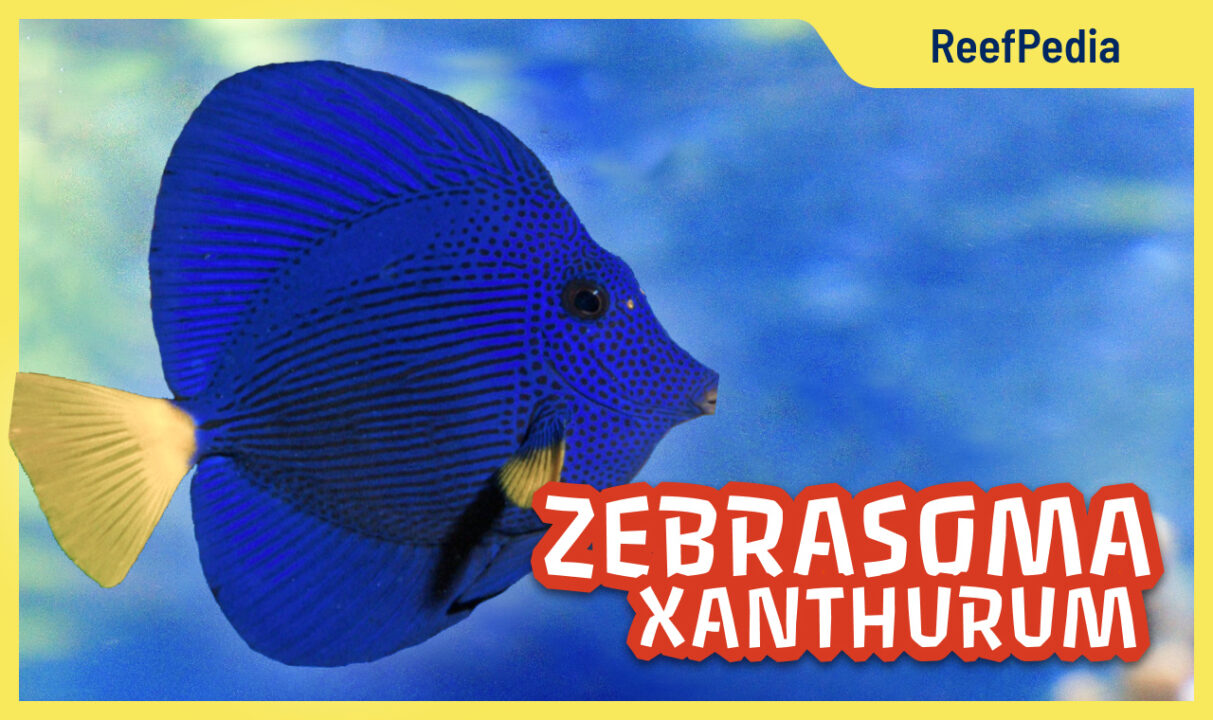Thinking of having a purple tang in a reef tank? Or are you planning to set up a marine aquarium and looking for perfect fish species to be kept in? Read this article and check if purple tangs are hard to keep.
Table of Contents
Purple tang characteristics
- Maximum fish size: 22 cm (8.7″)
- Temperature tolerance range: 22°C – 28°C
- Minimum saltwater aquarium volume: ~ 800L [211 gal]
- Advancement level: easy
- Nutrition: algae, plant foods, frozen foods (artemia, krill, others)
- Aggression: aggressive towards other Acanthuridae, especially Zebrasomas
- Reef safety: reef safe
- Occurrence: Maldives, Red Sea, West Indian Ocean
What is a purple tang fish?
Purple tang is also known as yellow tail tang, dusky sailfin tang, Red Sea Sailfin, Yellowtail Sailfin Tang, yellowtail tang, or yellow tang. It’s one of the most beautiful saltwater fish belonging to the Acanthuridae family, Zebrasoma (surgeonfish) genus. Purple tangs are quite often found in marine aquariums.
Purple tangs live in reef ecosystems, can be found in the Gulf of Aden, Persian Gulf, and the Arabian Sea, where they eat filamentous algae. They have huge dorsal and anal fins, which can sometimes split.
Purple tang care instructions
When you are keeping a purple tang in your home aquarium please remember about good lighting, lots of free swimming space and plenty of potential hiding spots. Purple tangs are the most aggressive of all zebrasomas species, and do not live well with tangs of similar shape species, especially those of the Zebrasoma genus.
If there are more of them in the reef aquarium, they will establish a hierarchy. It is worth letting in the fish in order from the least to the most aggressive. Although keeping more than one purple tangs in a mutual tank is doable.
They can get sick. If they are stressed, they cen get LLD (Lateral Line Disease) which is referred to as a hole-in-the-head disease.
What do purple tangs eat?
They spend most of their time picking algae from rocks. So if we don’t have algae on the live rock, then the animal should be provided with a dried algae clip, which they’ll nibble on. The fish can also eat many kinds of frozen food like brine shrimps or mysis.
About the author

Marek Protasewicz
Reefkeeping has been my passion for over 10 years now. I love learning. The hobby has taught me many valuable lessons, patience being the best example. Combining work and passion is my path. I run Crazy Coral, a marine aquarium shop, for a number of years. Building this business from the scratch I learnt from my own mistakes at a heavy cost.
Later I managed a project aimed at development of methods for quick growth of Corals in non-natural conditions. The project was carried out by Get Sales, Poland. Presently, I am responsible for distribution strategy at Reef Factory, of which I am a co-founder. The company produces smart devices for marine aquaristics. The last projects I have been involved in are Social Reef and ReefPedia.



